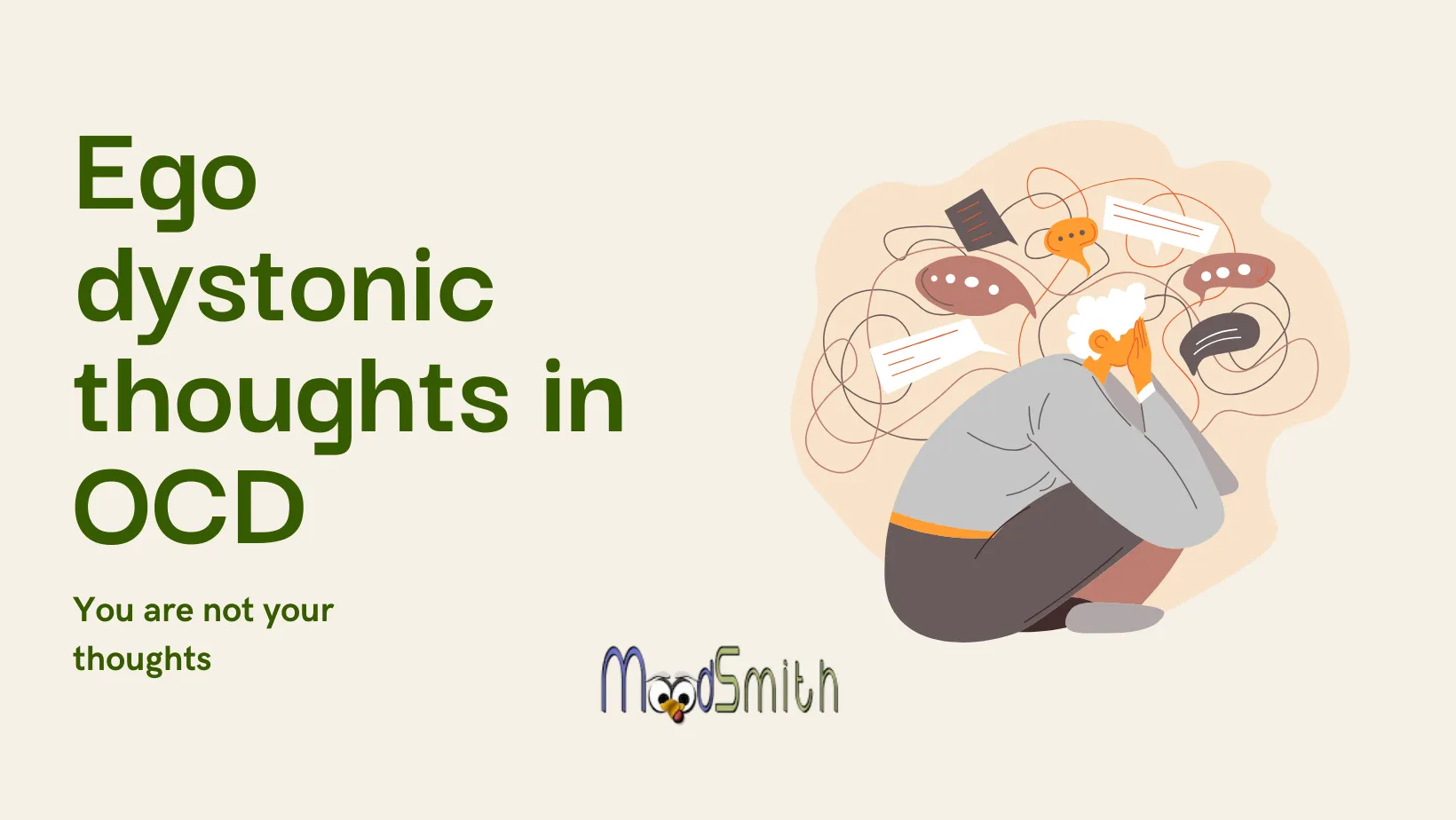Understanding the complexities of our thought processes is essential in all aspects of mental health, but particularly for those of you who have Obsessive-Compulsive Disorder (OCD). With OCD, there are ego-dystonic thoughts—intrusive, unwanted thoughts that conflict with your belief system, how you view yourself and the values you hold dear, causing significant distress. This article will discuss these thoughts and their impact on your mental health. It will look at the relationship between ego-dystonic thoughts and self-criticism, which was discussed in this post when I spoke about the importance of self-compassion. It’s important that I help you understand the difference between these thoughts and your core values; as your fundamental beliefs will still be in tact, just your thought processes made you doubt it.
Stop Intrusive Thoughts

Online course to help manage intrusive thoughts
What are Ego Dystonic Thoughts?
Ego-dystonic thoughts are thoughts, impulses, or desires that are in conflict with your self-image and values; this paper noted the person finds them repugnant. An example of this is a deeply religious person who respects the sanctity of their church and yet struggles to resist the impulse of shouting obscenities during the service. These thoughts are often intrusive and unwanted, causing significant distress. They are termed ‘dystonic’ because they are dissonant with the individual’s ego or self-concept. For the religious person having blasphemous thoughts as part of their OCD are dystonic.
Ego-syntonic thoughts on the other hand, align with your view of yourself and your values. For example, having thoughts in keeping with their faith during a church service would be an ego-syntonic thought.
I should point out it is not just people with OCD that have ego-dystonic thoughts, but if you have OCD they are particularly troublesome as they can exacerbate your obsessions, make you feel more ashamed or repelled by your thoughts and lead to a vicious cycle of anxiety and compulsive behaviours.
Ego dystonic thoughts in OCD often revolve around specific themes. If you have been reading about OCD or read on MoodSmith these can be called the more taboo thoughts, such as harm or inappropriate sexual or religious thoughts.

I shall include a case study to help explain these thoughts in a bit more detail. All details have been anonymised.
Background: Mr D came to see me for therapy because he was experiencing alarming thoughts. He is happily married with two kids and would have considered himself a good father, but lately he has had some terrifying thoughts. He says he can’t explain it, as they go against everything that he holds dear.
Presenting Problem: He came for professional help because he was scared he could harm his children. These thoughts are graphic and violent, but even though he knows that he would never hurt his children and he never has hurt his kids, he is replused by his thoughts. . He avoids being alone with his children and has developed various rituals to try to prevent these thoughts from coming true, such as repeatedly checking on his children to ensure they are safe and asking his wife for reassurance.
History: The thoughts began about three years ago, shortly after the birth of his second child. Initially, he dismissed them as fleeting and meaningless. However, the thoughts became more frequent and intense over time, leading to significant distress. He also experienced other OCD symptoms, such as the need to wash his hands excessively to avoid contamination and checking locks multiple times before going to bed.
Assessment: The assessment reveals that his intrusive thoughts are ego-dystonic; they are inconsistent with his self-perception and values. He finds these thoughts repugnant and is deeply ashamed of them. The assessment also shows that he engages in compulsive behaviours (e.g., checking, seeking reassurance) to alleviate the anxiety caused by these thoughts.
Diagnosis: Based on the assessment, Mr D is diagnosed with Obsessive-Compulsive Disorder (OCD), characterized by intrusive, ego-dystonic thoughts and compulsive behaviours.
Treatment Plan:
- Cognitive-Behavioural Therapy (CBT): Specifically, Exposure and Response Prevention (ERP) will be used to help Mr D confront his intrusive thoughts without engaging in compulsive behaviours.
- Psychoeducation: Educating him about OCD and the nature of intrusive thoughts to reduce his guilt and shame.
- Mindfulness Techniques: Teaching him mindfulness strategies to help him observe his thoughts without judgment.
Outcome: At the end of therapy, Mr D reports a significant reduction in the frequency and intensity of his intrusive thoughts. He learns to tolerate the anxiety associated with these thoughts without resorting to compulsive behaviours. He said he better understands his OCD and feels less ashamed of his thoughts, as he now knows that they do not mean anything about him as a person, it’s just his OCD.
I hope by including this case study that, you can see that some thought processes that go against your deeply held values are not a reflection of you as a person. There is a name for them: ego-dystonic thoughts. what I found when working with people with OCD, often just the mere fact that you can put a name to what you have been experiencing not only brings relief but can be the first step in gaining control over your OCD.
